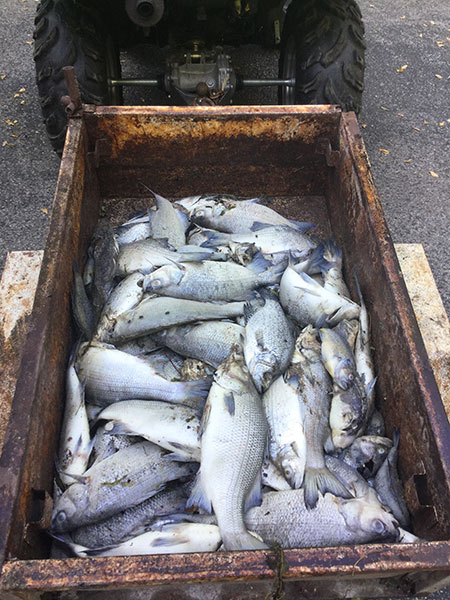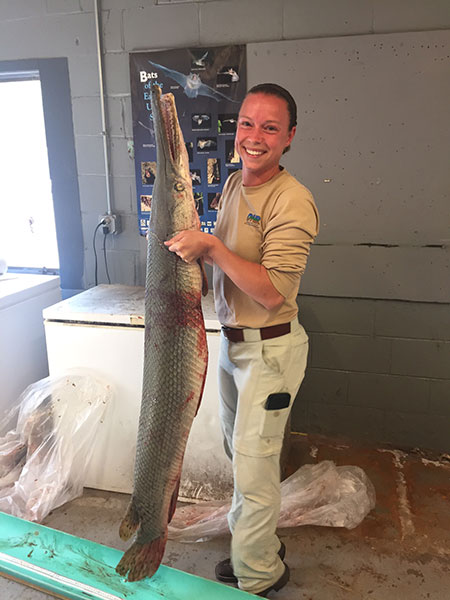- Details
(Provided by IDNR)
Indiana's breeding population of peregrine falcons remains productive, according to DNR's nongame bird biologist.
This spring the DNR banded 40 chicks, up from 32 in 2016, according to biologist Allisyn Gillet of the Division of Fish & Wildlife. Chicks were banded in East Chicago, Fort Wayne, Gary, Indianapolis, Michigan City, Petersburg, South Bend, Terre Haute and Wheatfield.
The number of falcons hatched this year in Indiana is likely even higher. Some of the known nest sites are inaccessible to biologists, and it is possible that nest sites exist that have yet to be discovered, Gillet said.
In Indiana, peregrine falcons nest in urban and industrial settings on man-made structures. At some known nest sites, biologists have built a nest box to provide the birds with additional cover. During falcon recovery efforts in the 1970s, scientists discovered that skyscrapers and other tall structures mimic the peregrine's natural cliff-side habitat.
- Details
(Provided by IDNR)
 Dead Fish Appear at Kosciusko County Lakes
Dead Fish Appear at Kosciusko County Lakes
A recent rash of fish kills in several Kosciusko County lakes has residents and anglers looking for possible causes.
In most cases, DNR biologists say the causes are unknown, but the fish kills will not affect the overall health of fish populations or the quality of fishing.
Dead common carp were reported to the DNR at the Barbee lakes, Hoffman, Ridinger, Robinson and Winona lakes and Lake Wawasee. Other species died at Lake Wawasee and Syracuse Lake, including adult white bass, bluegill, crappie, largemouth bass and bullhead catfish.
- Details
(Provided by IDNR)
 Hoosier Gets Rare Fish - An Alligator Gar
Hoosier Gets Rare Fish - An Alligator Gar
Alligator gar aren't normally found in Indiana waters, but a bowfisherman harvested one June 1 in the White River in southwestern Indiana. The rare fish, which was taken legally, measured 63 inches and 55 pounds when examined by DNR fisheries biologists.
It is the first alligator gar verified by state biologists in recent history. Indiana is at the northern edge of the historic range of alligator gar, so the species is rarely encountered here.
DNR fisheries biologists have sampled Indiana's large rivers extensively for the last 30 years with no alligator gar being collected. Gar species commonly found in Indiana waters are shortnose, longnose, and spotted gar.
- Details
(Provided by IDNR)
With more than 200 fish species in Indiana waters, anglers sometimes catch fish they can't immediately identify.
A new online tool through the DNR Division of Fish & Wildlife can help. The Fish Identification Form allows the public to submit photos and information for free directly to fisheries biologists for help with identification.
The form is at www.wildlife.IN.gov. The new tool will not only serve anglers but also benefit science. Information collected from the forms will help biologists track rare species and identify locations of invasive species.
- Details
(Provided by IDNR)
Recent heavy rains that flooded northeast Indiana ditches could create problems for anglers.
DNR fisheries biologists say flooding can create better conditions for non-native common carp to move into lakes, rivers and wetlands.
Introduced in Indiana in the 1880s, common carp have spread throughout the state and caused widespread damage to water quality, fish habitat and fishing. Carp roil the muck and silt on lakebeds and riverbeds, muddy the water, uproot aquatic plants and destroy nests of other fish.
They also compete for food and space with sport fish and upset the natural food web.
"They are the No. 1 nuisance fish in Indiana," DNR biologist Jed Pearson said.


